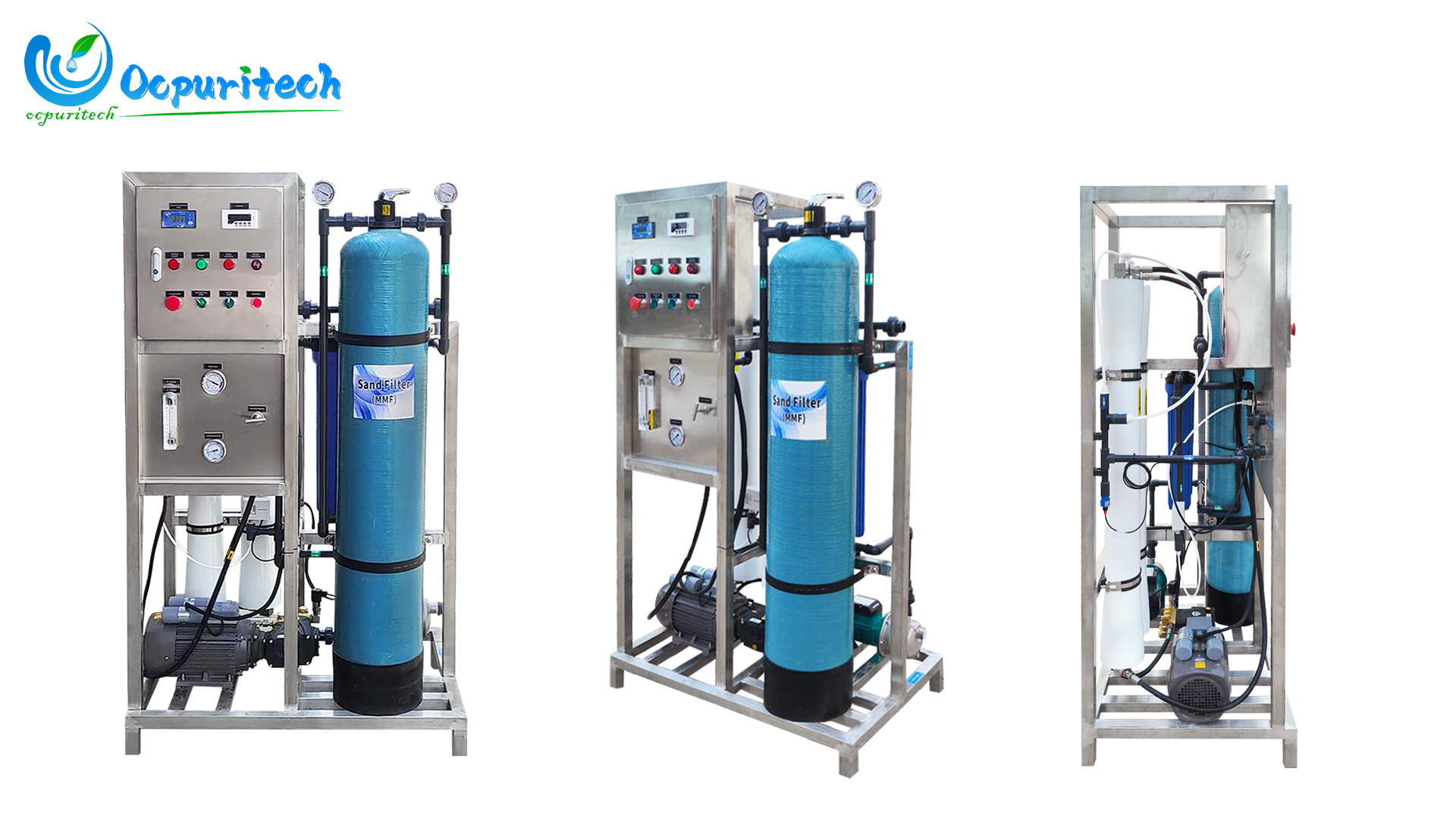Introduction
Desalination is the process of removing salts and impurities from seawater to produce fresh water. With the global increase in water scarcity, the need to explore alternative sources of potable water has become crucial. This blog delves into the principles and technologies of desalination, its current application status, the safety of drinking desalinated water, and the advantages and disadvantages of this technology. We’ll also look at the investment costs associated with desalination to provide a comprehensive understanding of its viability.

What are the principles and technologies of desalination?
Desalination employs various technologies to purify seawater. The primary methods include:
- Reverse Osmosis (RO): This is the most common method of desalination. It involves pushing seawater through a semi-permeable membrane under high pressure. The membrane filters out salts and impurities, allowing only fresh water to pass through. RO is known for its high efficiency and ability to remove up to 99.9% of contaminants, including dissolved salts, bacteria, and viruses.
- Multi-Stage Flash Distillation (MSF): In this thermal method, seawater is heated until it vaporizes. The vapor is then condensed to produce fresh water. The process involves multiple stages, each operating at progressively lower pressures and temperatures, which increases efficiency.
- Multi-Effect Distillation (MED): Similar to MSF, MED uses a series of evaporators, called effects, to distill seawater. Each effect uses the heat from the previous one, making the process energy-efficient.
- Vapor Compression Distillation (VCD): This method compresses and heats vapor to produce fresh water. It is often used for smaller-scale desalination operations due to its efficiency and relatively lower energy consumption.
- Electrodialysis (ED): This method uses electrical potential to move salts through a membrane, separating them from the fresh water. It is particularly effective for brackish water desalination but can also be used for seawater.
Current application status of desalination
Desalination is widely used in regions where freshwater resources are scarce. Countries in the Middle East, such as Saudi Arabia and the United Arab Emirates, have heavily invested in desalination technology. In these regions, desalination plants provide a significant portion of the drinking water.
In the United States, California has also turned to desalination to address water shortages. The Carlsbad Desalination Plant, one of the largest in the Western Hemisphere, provides about 50 million gallons of fresh water per day.
Australia, Spain, and Israel are other notable examples of countries that have adopted desalination to combat water scarcity. Desalination plants in these regions not only supply drinking water but also support agriculture and industry.
Safety of drinking desalinated water
Desalinated water is generally considered safe to drink and meets international water quality standards. The process effectively removes contaminants such as salts, heavy metals, and pathogens. Post-treatment processes, such as re-mineralization and disinfection, ensure that the water is safe and palatable for human consumption.
Re-mineralization adds essential minerals like calcium and magnesium back into the water, improving its taste and nutritional value. Disinfection methods, such as chlorination or UV treatment, ensure that any remaining microorganisms are eliminated, providing an additional layer of safety.
Studies have shown that drinking desalinated water has no adverse health effects. However, it is important to maintain rigorous quality control and monitoring to ensure the safety of the water supply.

What are the advantages and disadvantages of desalination?
Advantages:
- Reliable Water Source: Desalination provides a consistent and reliable source of fresh water, especially in arid and drought-prone regions where traditional water sources are limited.
- Reduces Dependence on Freshwater Sources: By providing an alternative to over-exploited rivers and lakes, desalination helps preserve these vital ecosystems.
- Sustainability: With the integration of renewable energy sources, such as solar and wind power, desalination can become a more sustainable solution to global water scarcity.
- Technological Advancements: Ongoing research and development are making desalination more energy-efficient and cost-effective, broadening its application potential.
Disadvantages:
- High Energy Consumption: Desalination is energy-intensive, particularly methods like Reverse Osmosis and thermal distillation. This results in high operational costs and environmental concerns related to energy use.
- Environmental Impact: The disposal of brine, a by-product of desalination, poses a threat to marine life. Brine is highly concentrated in salts and can lead to increased salinity in the disposal area, affecting local ecosystems.
- Initial Investment Costs: The capital required to build desalination plants is substantial. Infrastructure development, technological installation, and maintenance add to the overall cost.
- Maintenance Requirements: Desalination plants require regular maintenance and monitoring to ensure efficient operation and water quality. This includes replacing membranes and filters, which can be costly.
Investment cost of desalination?
The investment cost of desalination varies based on the technology used, the scale of the operation, and the geographical location. Generally, constructing a large-scale desalination plant can range from $500 million to over $1 billion. Operational costs, driven primarily by energy consumption, add to the overall expense.
Advancements in technology and the adoption of renewable energy sources are gradually reducing these costs. For instance, coupling desalination plants with solar or wind farms can significantly lower energy expenses and enhance sustainability.
Conclusion
Desalination is a viable solution for turning seawater into fresh, drinkable water. It is especially valuable in regions facing freshwater scarcity. While the technology has its challenges, including high costs and environmental concerns, ongoing advancements are making it more efficient and sustainable. By understanding the principles, applications, and costs associated with desalination, we can better appreciate its potential to address global water needs and ensure a reliable supply of fresh water for future generations.
